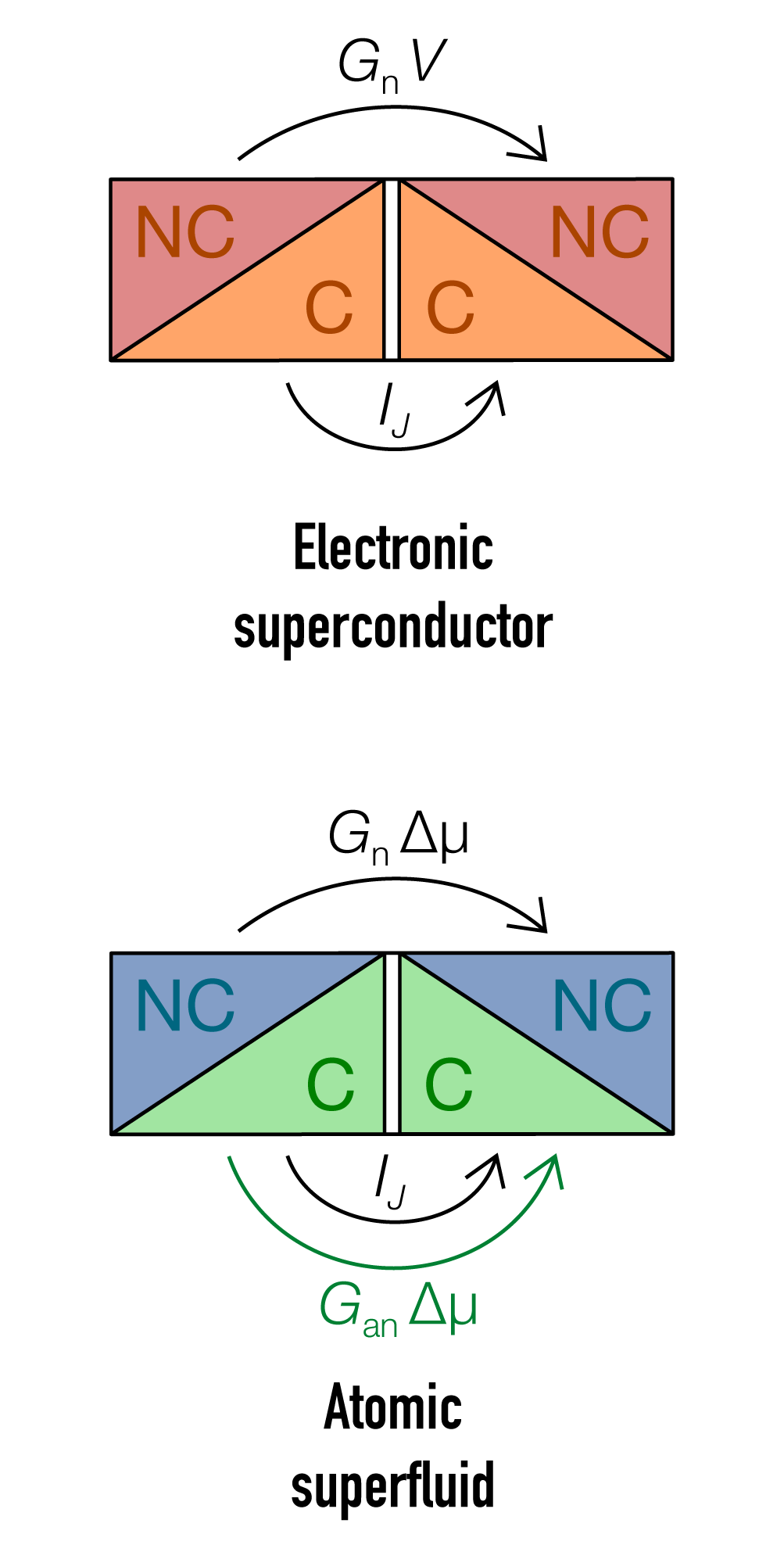 |
By investigating the tunneling transport of ultracold atomic Fermi gases, we reveal for the first time a peculiar enhancement of the conductance of neutral superfluids, in contrast with charged superconductors. — Both superfluids and superconductors owe their distinctive frictionless flow to their condensed nature, namely the macroscopic occupation of a single quantum state. Regardless of the electric charge of the constituent particles, condensation results in the emergence of the Josephson effect: a tunneling current flows when two superfluid reservoirs are coupled with one another through a thin insulating barrier in a so-called Josephson junction. G. Del Pace et al. |


Fermions with tunable interactions... In the lithium lab we produce ultracold Fermi gases of 6Li to explore out-of-equilibrium dynamics and transport phenomena in strongly correlated fermionic matter. Atoms are confined into light-imprinted potential structures, simulating the motion of electrons in solid state devices. Our main goal is the study of two-dimensional strongly correlated phases, such as superfluidity across the BCS-BEC crossover and its robustness to disorder.
